New York's economic growth today hinges on several key factors that shape its landscape. From the emergence of tech hubs to the evolving nature of remote work, each element plays a role in this dynamic environment. Additionally, the financial services sector is evolving, while cultural industries are experiencing a resurgence. What's often overlooked is the impact of a diverse workforce. Understanding how these elements intertwine could reveal deeper insights into the city's future.
The Rise of Technology and Innovation Hubs
The rise of technology and innovation hubs in New York has transformed the city's economic landscape. You can see how these hubs foster collaboration and creativity, attracting startups and established companies alike. With a vibrant mix of talent and resources, the city encourages entrepreneurs to launch new ventures and develop groundbreaking solutions. You'll notice the surge in tech jobs, which boosts local economies and creates a dynamic workforce. Additionally, venture capital investments flow into these hubs, fueling growth and innovation. You might find yourself immersed in a community that embraces change and supports diverse ideas. As you navigate this thriving ecosystem, you'll witness firsthand how technology reshapes industries and enhances the overall economic viability of New York. The city's extensive network of fintech startups contributes significantly to job creation and economic expansion.
The Impact of Remote Work on Real Estate
Remote work has substantially reshaped New York's real estate market, leading to changes in both residential and commercial spaces. As more people embrace remote working, you're likely noticing a shift in demand for larger apartments and homes with dedicated office spaces. Many are opting for properties in outer boroughs or suburban areas, seeking more space and affordability.
On the commercial side, businesses are reevaluating their office needs. Some companies are downsizing or adopting hybrid models, resulting in increased vacancy rates in traditional office buildings. Landlords are adapting by offering flexible leasing options and repurposing spaces to attract tenants. This evolving landscape reflects a new reality, where your work-life balance influences not just personal choices but also broader real estate trends. Furthermore, the need for continuing education requirements is becoming increasingly important for real estate professionals navigating this changing market.
Financial Services: Adapting to a New Era
As businesses navigate the shifting landscape of financial services, they're increasingly adopting innovative technologies to stay competitive. You'll notice that firms are leveraging artificial intelligence and big data to enhance decision-making, streamline operations, and personalize customer experiences. This tech-driven approach allows you to meet client demands more effectively and efficiently. Furthermore, regulatory changes are prompting financial institutions to rethink their compliance strategies, ensuring they remain agile in a dynamic environment. By embracing digital platforms and fintech solutions, you're not just keeping pace—you're driving growth. Staying ahead means investing in cybersecurity as well, protecting sensitive information from emerging threats. Ultimately, adaptation in this sector is vital for securing your place in New York's vibrant economy. Additionally, financial assistance programs support businesses in enhancing their operational capabilities through grants and loans.
Cultural Industries and Their Economic Resurgence
New York's cultural industries are experiencing a significant resurgence, fueled by a blend of innovation and community engagement. You'll find artists, musicians, and creators collaborating in new ways, transforming spaces into vibrant hubs of creativity. This revival isn't just about art; it's also driving economic growth by attracting tourists and local visitors alike. You can see galleries, theaters, and music venues buzzing with activity, showcasing diverse talent and fresh ideas. Events and festivals are thriving, creating jobs and boosting local economies. As you explore the city, you'll notice how these cultural expressions contribute to a dynamic atmosphere, enhancing New York's identity while solidifying its position as a global cultural leader. Embracing this resurgence benefits both the community and the economy. Additionally, the city's cultural attractions, such as Broadway shows, play a pivotal role in drawing millions of visitors each year.
The Role of a Diverse Workforce in Economic Growth
A diverse workforce plays a crucial role in driving economic growth, bringing together varying perspectives, skills, and experiences. When you embrace diversity, you foster innovation and creativity, leading to unique solutions and products that cater to a broader market. Different backgrounds and viewpoints spark fresh ideas, enabling your business to adapt and thrive in a competitive environment.
Moreover, a diverse team enhances customer relations by better understanding and meeting the needs of a varied clientele. This inclusivity not only attracts top talent but also improves employee satisfaction and retention. As you recognize the value of each individual, you contribute to an environment where everyone feels valued, ultimately driving productivity and growth. In New York, this diversity is a cornerstone of a resilient economy. Additionally, the city's multicultural makeup enriches the workforce, allowing businesses to tap into a vast array of skills and experiences.
Frequently Asked Questions
How Has the Pandemic Affected Tourism in New York City?
The pandemic's hit on tourism in New York City has been significant. You've likely noticed fewer visitors, closed attractions, and a struggle for local businesses. Recovery's underway, but it'll take time to regain momentum.
What Industries Are Declining in New York's Economy?
You'll notice that industries like retail, manufacturing, and traditional media are declining in New York's economy. Shifts toward e-commerce and digital platforms have substantially impacted these sectors, leading to job losses and decreased economic activity.
How Does New York's Economy Compare to Other Major Cities?
New York's economy stands out with its diverse industries and global influence. Compared to other major cities, it boasts a higher GDP, extensive job opportunities, and a vibrant cultural scene, making it a unique economic powerhouse.
What Role Does Government Policy Play in Economic Growth?
Government policy substantially influences economic growth by shaping regulations, tax incentives, and infrastructure investments. You'll find that effective policies can stimulate business activities, attract investments, and ultimately enhance the overall economic landscape in your area.
How Do Small Businesses Contribute to New York's Economic Landscape?
Small businesses fuel New York's economy by creating jobs, fostering innovation, and enhancing community engagement. You'll find their unique offerings enrich the local culture, while their resilience boosts overall economic stability and growth.
Conclusion
To summarize, New York's economic growth thrives on innovation, technology, and a diverse workforce. As tech hubs and fintech startups flourish, they create new job opportunities and foster collaboration. The shift to remote work reshapes real estate, while cultural industries bounce back, enriching the city's vibrancy. By embracing these changes and leveraging unique perspectives, New York continues to lead as a powerhouse of creativity and economic dynamism, ensuring a bright future for its residents and businesses.

